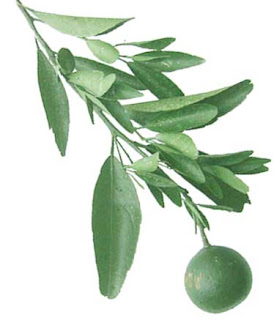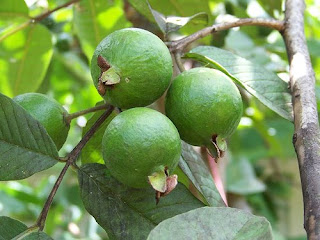
English: Holy Basil
Latin: Ocimum sanctum (“sacred fragrant lipped basil”)
or Ocimum tenuiflorum (“basil with small flowers”)
or Ocumum gratissimum (“very grateful basil”)
Botanical Family: Lamiaceae (mint)
Hindi: Tulsi
Sanskrit: Tulasi
Holy Basil has a long tradition of use in Ayurvedic medicine and is a well-known sacred plant of the Indian subcontinent. Holy Basil has been called the “Incomparable One”, the “Queen of Herbs” and “The Elixir of Life.”
In Sanskrit, tulsi means literally “the incomparable one” and has been revered since ancient times. Tulsi, the holy basil, is said to have grown at the site of Christ’s crucifixion and is associated with St. Basil’s feast, a day celebrated in Greece on January 1.
In ancient Indian scriptures, Tulsi (Holy basil or Ocimum sanctum) holds a supreme place as a sacred plant. It is considered very dear to Lord Vishnu, and devotees adorn Him with a tulsi garland. Tulsi has been widely known for its health-promoting properties for over 5000 years. Tulsi is also extensively used to maintain ritual purity; people wear tulsi beads (made from the woody stalks of the plant) as necklaces. The ancient sages ensured the integration of the tulsi into daily life by incorporating it into religious rituals. In most of the Hindu temples, tulsi-soaked water is used to consecrate the deity and later distributed to devotees. This ensured that every one routinely consumed tulsi during worship at home and at the temples.
Parts utilized
Rhizomes.
Properties and constituents
Used as a mosquito repellant in India and South Africa.
Leaves yield a volatile oils or methyl homo anisic acid, plus cineol and linalool.
Seed decoction used as demulcent.
Leaves are expectorant and stomachic.
Uses
Others
It is the most sacred plant in Hindu religion.
In Malaya, leaves are eaten sparingly as salad., but not used for flavoring foods.
Folkloric
Decoction of leaves used for aromatic baths.
Decoction of roots and leaves used for gonorrhea.
Used for rheumatic baths.
Dried plant used for croup, diarrhea, catarrh, bronchitis and diarrhea.
Decoction of roots used as diaphoretic for malarial fevers.
Leaf juice used for earache.
Infusion of leaves as stomachic and hepatic infections.
Fresh juice iinduces vomitiing and expels worms.
Mixed with honey, ginger and onion juice, used as expectorant for bronchitis and coughs.
In Java, used to increase milk secretion.
In India, leaf juice traditionally used for cough, stress situations, worm infestations, superficial fungal infections, and as diuretic.
Studies
• Radioprotective: The radioprotective effects of two flavonoids, orientin and vicenin from the leaves of OS were studied by evaluating chromosome aberration in bone marrow cells of irradiated mice. Results suggest ocimum flavonoids may be promising for human radiationn protection.
• Hypoglycemic:In a study, one of 24 of 30 medicinal plants, OS showed significant blood glucose lowering activity.
• Anti-anxiety: Ethanolic extract study showed leaves possess anti-anxiety effects probably through a central nervous system pathway that may involve the GABA-ergic system. Another study on noise-induced changes in rats were normalized with pretreatment with OS extract indicating its stress-alleviating effect.
• Anti-tussive: Antitussive effect probably by central action mediated through both opiod and GABA-ergic system.
• :Antibacterial: Study of ethanol extracts showed antibacterial activity, greater in Gram positive bacter than gram-negative, esp against B subtilis and S aureus; comparatively less than Origanum majorana. Another study on OS essential oil showed marked antibacterial efficiency against all bacteria tested, maximum against S aureus and marked antibacterial efficacy against P mirabilis, P aeruginosa, Klebsiella sp and E coli.
• :CNS-Protective: A study showed the ethanol leaf extract of O sanctum to have a protective effect against haloperidol-iinduced catalepsy and indicates that OS may be used to prevent drug-induced extrapyramidal effects.
• Antioxidant: A study showed the leaves of OS to possess both superoxide and hydroxyl free radical scavenging effect and attributes the antioxidant property to be responsible for its hypoglycemic effect.
• Myocardial Salvaging Effect: A study showed Ocimum sanctum has cardioprotecdtive effects against ISP-induced myocardial necrosis probably through improved ventricular function, augmentation of endogenous antioxidants and suppression of oxidative stress.
• Anti-cancer activity: Administration of aqueous and ethanolic extracts of Ocimum sanctum to mice with sarcomatous tumor resulted in a significant reduction in tumor volume and increase in lifespan.
• Anti-Ulcer activity: Study showed the extract of OS reduced the ulcer index, free and total acidity in rats. Seven days of treatment increased mucous secretion.
• Antidiabetic activity: A study indicated OS leaf extracts to have stimulatory effects on physiological pathways of insulin secretion to explain its antidiabetic action.
• Hepatoprotective activity: A study showed the leaf extract of OS to have a hepatoprotective effect on hepatotoxicty induced by antitubercular drugs. The exact mechanism has not been defined, but OS antioxidant activity seems to be the most important mode of its hepatoprotective effect.
A Natural Remedy Rich in Phytochemicals and Anti-oxidants
The Holy Basil, known as the Tulsi in India, is sometimes termed “The Mother Medicine of Nature,” due to its many health benefits.
Parts Used
All parts of the plant are used, but particularly the fresh or dried leaves, which have a strong aroma and taste. The delicious tea made from Tulsi leaves, in particular, has many health benefits.
Chemical Composition of Tulsi
The chemistry of Tulsi is rather complex, as it contains many biologically active compounds and nutrients. The Phytochemicals are said to interact and combine in unique ways. The main compounds in tulsi are “ursolic acid,” an essential oil called “eugenol,” and antioxidants. It has anti-bacterial, anti-fungal and anti-viral properties.
The Health Benefits of Tulsi
Regular use of Tulsi leads to overall good health and vitality.
- It boosts the immune system and metabolism of the body, and is effective in treating allergies.
- Tulsi detoxifies the blood, and flushes out toxins from the body.
- The juice is effective in treating bronchitis, coughs and colds, and other common ailments. Moreover, it enhances the use of oxygen in the body, and is thus useful in respiratory problems, like asthma.
- Tulsi contains antioxidants, which neutralize the harmful effects of free radicals, and thus arrests aging.
- It is also reputed to control degenerative conditions, like dementia, cancer, diabetes, heart problems and arthritis.
- Tulsi reduces inflammation and fevers, and cures headaches.
- Due to its antibacterial properties, it is used to treat infectious diseases.
- Tulsi is supposed to be anti-carcinogenic. Traditional practitioners recommend taking a Tulsi leaf every day to prevent cancers.
- Tulsi lowers cholesterol and blood pressure, and thus prevents cardiac problems.
- It helps in digestion and absorption of nutrients by the body, by encouraging the secretion of digestive enzymes. Therefore, it also acts as an appetizer. Moreover, its carminative properties prevent gastric ulcers.
- It also controls E.coli and tuberculosis, and hastens the recovery of patients with viral hepatitis and encephalitis.
- Tulsi has been proved good for periodontal health; a decoction can be used to cure toothache, and as a general mouth wash.
- The Ursolic acid has an anti-fertility effect, without any negative effects.
- Some research points to the Tulsi as a protection against the ill effects of radiation.
- An interesting fact is that it does not contain any caffeine, yet acts as a vitalizer or quick “pick me up” to increase stamina and endurance.
- Finally, Tulsi relaxes the muscles, and acts as a stress buster.
The small leaves of the Tulsi are packed with health enhancing properties, beneficial for the heart, lungs, immune and digestive systems. Tulsi is also effective in preventing and treating a number of common ailments, and contributing to a general feeling of well being. Therefore, it is rightly called the “Queen of Herbs” in India.
Caution: Though there are generally no side/after effects, one should check with a medical practitioner, before using any herbs for medicinal purposes.
Holy Basil or Tulsi is a powerful adaptogen; hence it is invaluable as an anti-stress agent. In fact, it is sometimes said to be more effective at reducing stress than ginseng. Tulsi, the sacred basil, is one of the holiest plants of modern Indians, renowned for its health promoting and disease-preventing properties.
Benefits of Fresh Basil Leaves
Should you be feeling stressed or exhausted, and suffering any associated symptoms such as headaches, indigestion, muscle tension, nerve pain and so on, or feel that your memory needs a boost, taking basil is the perfect tonic. This herb is known to be both antiseptic and cleansing and assists the body overcome a variety of infections.
The relaxant properties that are found in hot basil tea, extend to both respiratory and digestive tracts and so relieves symptoms of colic, constipation, nausea, asthma and coughs. Other benefits of Tulsi Tea: it can reduce fevers and moves phlegm build up during times of suffering colds and flu.
- Assists in Sharpening Memory and Concentration
- Tonic for Nerves and Treats Irritability
- Reduces Stress
- Promotes Calmness and Clarity
- Clears Phlegm from Chest and Nose
- Eases Symptoms of Colds, Flu, Coughs and Sore Throats
- Strengthens the Stomach
- Treats Vomiting and Nausea
- Improves Metabolism
- Aids in Treating Constipation
- Strengthens the Kidneys
- Known as a Anti-Stress Agent or ‘Adaptogen’
- May Reduce Blood Cholesterol
- Assists in Treating Insomnia
Leaves of the Holy Basil herb may be chewed to help relieve ulcers of infections of the mouth, and can also assist with various skin diseases, bites, stings, cuts and wounds if juiced and applied to the skin. This method may also be used to treat head lice.
The taking of Tulsi tea or holy basil leaves can refresh you when you feel tired, calm you when you feel tense or anxious as well as providing many other benefits. Holy Basil or Tulsi tea is rich in natural antioxidants, is a powerful adaptogen and a natural immuno-modulator.















